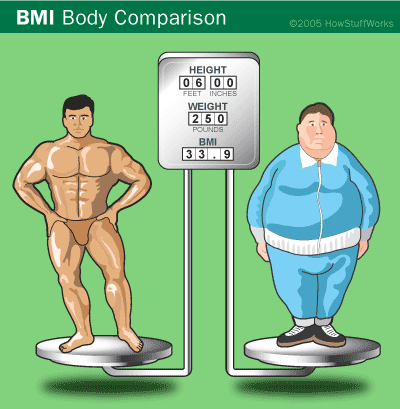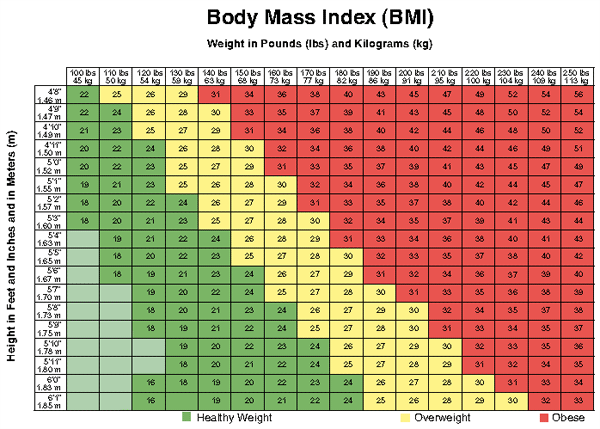BMI, body mass index, is a measure that has been around for a long time, more than 100 years. (This page on How Stuff Works gives a brief history of BMI.) In a nutshell, it uses your height and your weight to let you know whether you are in a healthy weight range or not. At a quick glance, using the chart below, you can see where you fall on the BMI chart.
Instead of using the chart, you can go to the Centers for Disease Control and Prevention Adult BMI Calculator to find out your BMI and whether you fall into a healthy range. Additionally, About Adult BMI on the CDC site gives a more in-depth look at BMI.
There are a couple reasons I shy away from using BMI as a health measurement.
The first is that it doesn’t differentiate between gender. In general, men have leaner bodies than women. (I know, that isn’t fair!) Yet, the same height male and female fall in the same place on the chart.
 The second reason I don’t care for BMI is it doesn’t take body composition into account. It doesn’t look at muscle mass vs body fat. As this image from How Stuff Works shows, you can have two men at the same height (6’) and the same weight (250 lbs) and their BMI is the same. When I look at this image I can see that one of these men appear “healthier” than the other.
The second reason I don’t care for BMI is it doesn’t take body composition into account. It doesn’t look at muscle mass vs body fat. As this image from How Stuff Works shows, you can have two men at the same height (6’) and the same weight (250 lbs) and their BMI is the same. When I look at this image I can see that one of these men appear “healthier” than the other.
I believe BMI can be used as a general guide. It is an easy way to get a quick idea as to a person’s health when it comes to their size. However, it needs to be used in conjunction with another measure and not on its own. More to come in the following weeks on other measures we can use.

